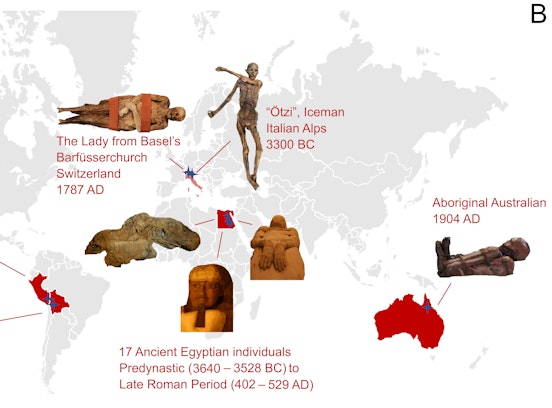Institute for Mummy Studies - Paleogenetics
Paleogenetics
Study of the past through the analysis of DNA in ancient human remains.
- English
Paleogenetic studies of mummies and skeletal human remains from different geographic origins and time periods provide insights into the history of past human populations. The reconstruction of past diets and the analysis of ancient human microbiomes including pathogens in mummified human remains offer insights into the lifestyle and disease of ancient societies. These investigations are possible thanks to the application of new high-throughput DNA sequencing techniques and targeted DNA enrichment that allow us to reconstruct genomic data from extinct human and microbial populations.
Comparative analysis of genomic data from ancient individuals with current populations allow us to answer questions regarding the genetic structure, geographic origin, history, and migration patterns of human populations. This molecular data of individuals from a specific archaeological context (e.g. in a cemetery) can in addition support bioarcheological studies to understand kinship and social organization or inheritance rules and mobility of past communities.
Besides human DNA, (pre-)historical skeletal and soft tissue samples can still contain traces of the original bacterial DNA. This applies both to the DNA of human commensals (e.g. intestinal bacteria) and to the genetic material of pathogens. Thereby, genome wide analysis of ancient pathogens provides information on the onset and spread of chronic infectious diseases such as tuberculosis or leprosy and helps to identify the causative agents of major human epidemics such as the plague. Furthermore, the metagenomic study of ancient human microbiomes provide novel insights into the composition and possible changes of human microbial communities over the last millennia.
The infrastructures linked to this research field are:




